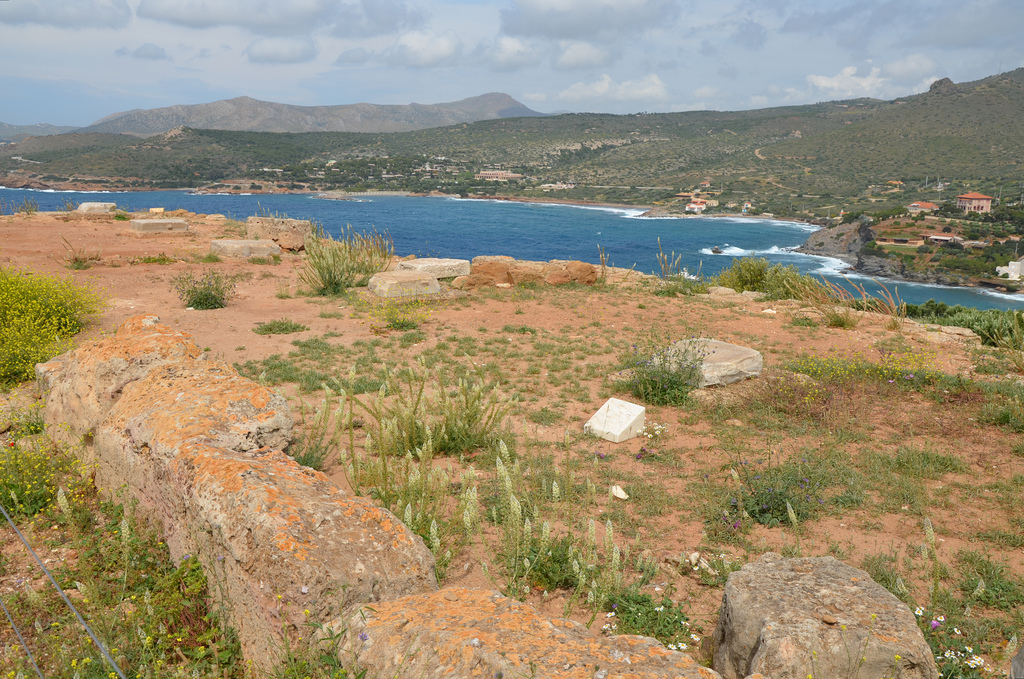Cape Sounion, with its famous temple dedicated to the god Poseidon, is one of the most beautiful natural areas of Attica and one of the most impressive archaeological sites in Greece. In ancient times it was called Sounias Akra and was connected with the legends of Athens and the Aegean. Cape Sounion is the spot where Aegeus, king of Athens, allegedly jumped off the cliff, thus giving his name to the Aegean Sea. It is also referred to as a sacred place in the Homeric epics. The site was chosen for its direct relationship with the sea since this was the last piece of land seen by ships departing from Athens and the first on returning from their voyage.
Coordinates: 37° 39′ 2.06″ N, 24° 1′ 28.51″ E
The site of Sounion has been inhabited since prehistoric times. From the 8th century BC, however, the cult of Poseidon and Athena started to develop, but the sanctuaries were destroyed in 480 BC by Persian troops during Xerxes I’s invasion of Greece. In the mid-5th century BC, by order of Pericles, the Temple of Poseidon was rebuilt, the ruins of which now dominate the cape’s summit with its 16 standing columns partly restored.
The sacred precinct (temenos) of Poseidon was entered through a monumental gateway of poros and marble to the north of the temple, the propylaea. Beyond, along the north side of the temenos, runs a stoa, some 40m long by 9m wide, divided into two aisles by an internal colonnade of six columns. A second smaller stoa occupied the west side of the precinct. The stoas served as accommodation for visitors to the sanctuary.
The temple of Poseidon is a Doric peripteral temple with six columns on the narrow sides and thirteen on the long ones, made of locally quarried white marble. At the centre of the temple would have been the hall of worship (naos), a windowless rectangular room similar to the partly intact hall at the Temple of Hephaistos in Athens (which is considered to be the work of the same architect). It would have housed a colossal bronze statue of Poseidon.
In the 19th century, Sounion was a popular destination for tourists, many of whom have engraved their names on the ruins of the temple of Poseidon. The most famous signature is that of the Romantic poet George Lord Byron.
PORTFOLIO







“Place me on Sunium’s marbled steep,
Where nothing, save the waves and I,
May hear our mutual murmurs sweep;
There, swanlike, let me sing and die:
A land of slaves shall ne’er be mine–
Dash down yon cup of Samian wine!”The Isles of Greece by Lord Byron (1788-1824)


Links:
